Nu Vernacular
Photos and text selections by Ben Koush, AIA
While we focus on Architecture, the vast majority of the built environment multiplies around us. Constructed without academicism or consciousness of contemporary discourse, this great mass of building — unseen and super populated — might be the most authentic expression of our society today.
Facade Extremism
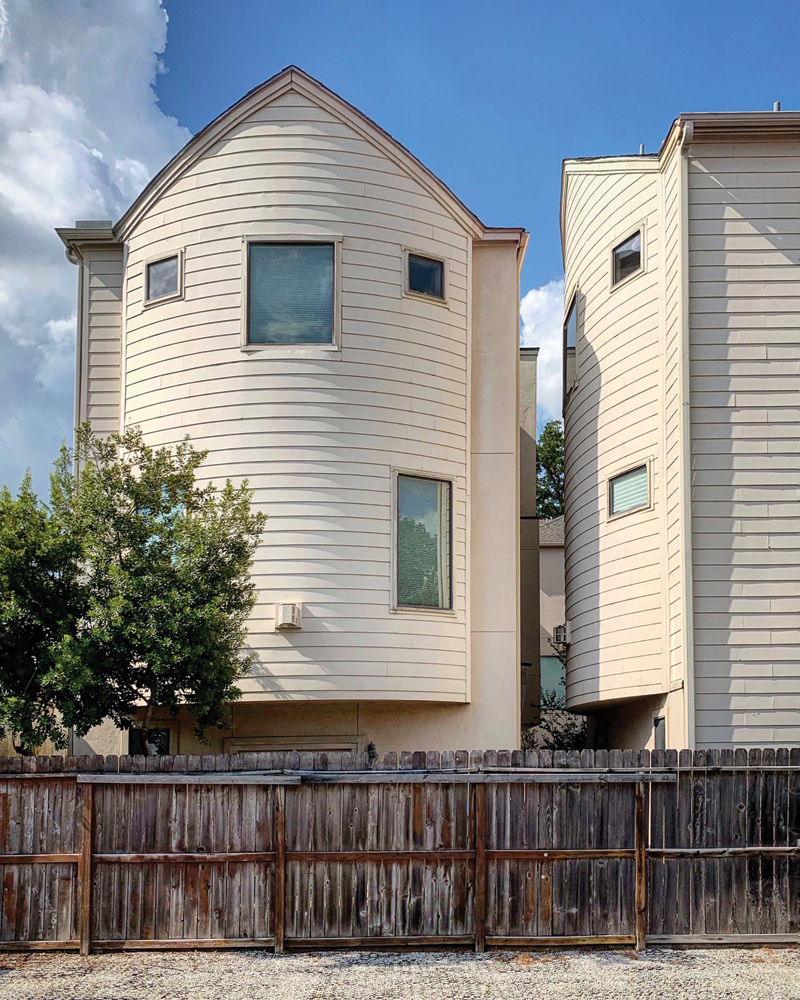
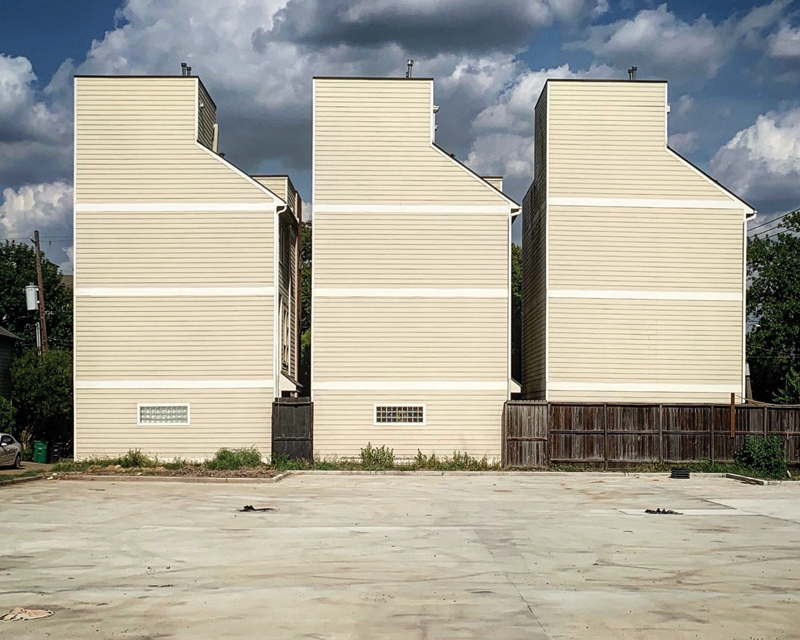
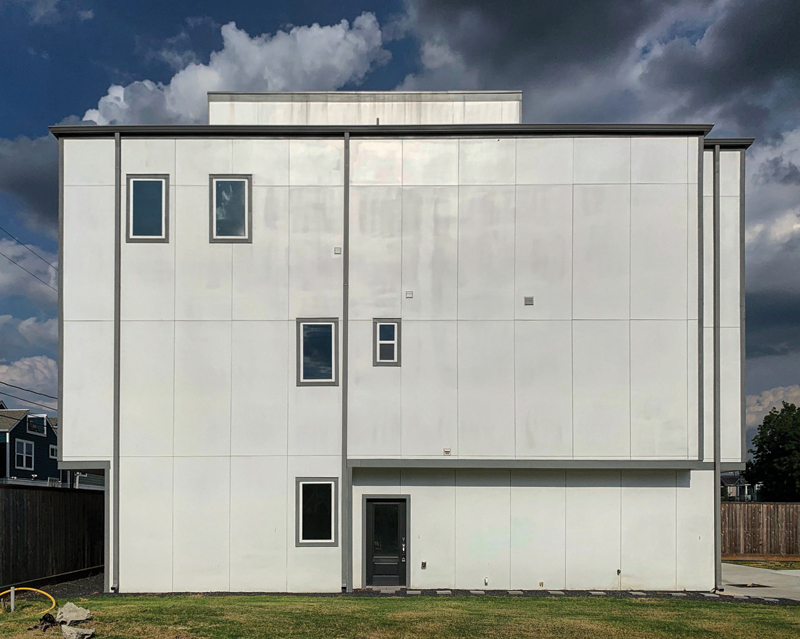
Commercialized architecture has taken the place of the traditional vernacular in the building of present-day America… What makes its study confusing is that this vernacular seems to be so unvernacular… What distinguishes contemporary consumer architecture from earlier forms is that it is consciously conceived of as imagery, as a form of environmental psychology based on marketing… It is this backdrop of pragmatism that makes consumerist buildings’ fantasy components often stand out so starkly from the rest of the building. That is the startling thing about the period fronts and plain backs of rowhouses in Houston or the modernistic fronts and equally plain backs of rowhouses in Houston… Consumerist architecture differs from most earlier architecture, because its imagery does not always make a consistent or coherent whole… The underlying attitude is one of expediency, in which the inclusion of any architectural detail, any references to history or human experience are extras that may be dispensed with whenever necessary.
– John Chase, “Unvernacular Vernacular,” Design Quarterly, Issue 131, 1986.
Postmodern Vernacular

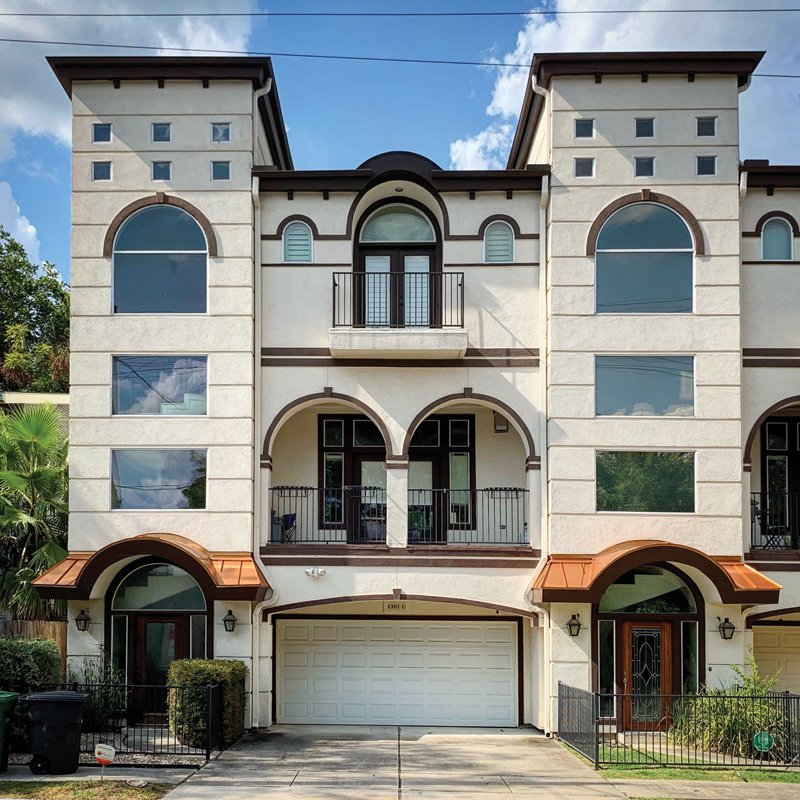


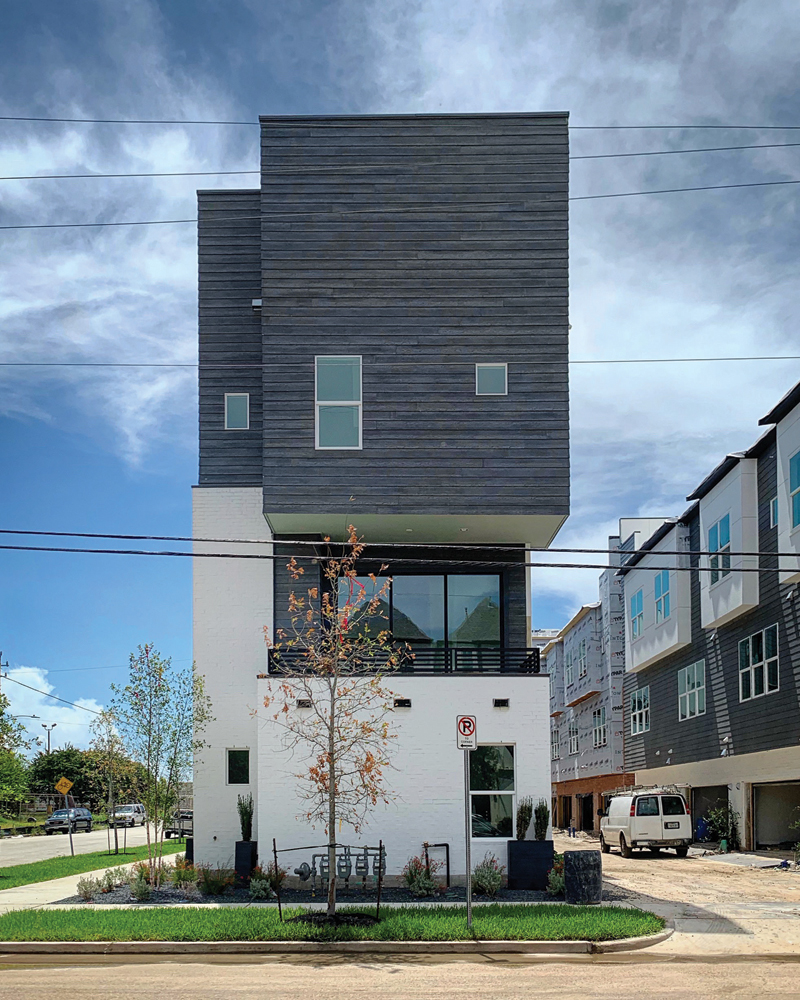

Houston, the expanded city of a mass culture, allows the hinterland to become a part of the foreground itself, thereby creating an ambiguity about what is special and what is typical in terms of public experience or urbanity. Commonplace begins to merge with the monumental. Vulgarity surely must be examined as an essential analytical element in the pursuit of Architecture in Houston. In the choice of vulgarity as a qualifying element of a critical framework, we are free to consider the implications on one hand at brashness, ostentatiousness, and perhaps non-elitist or uncultivated responses, and on the other hand more commonly-understood, vernacular formal expression evolving from a direct response to its contextual forces. This framework may provide a wedge to break into a new sensibility, one which may encompass the lack of a hierarchical value system, pluralism, shifting priorities, change and a void in terms of precedents…Confrontation with the dialectic of vulgarity and the evolution of aesthetic standards appropriate to the formal problems of the new, emerging city is a challenge Houston provides to a designer, and in this confrontation there will arise new architectural form, changing concept of style, and revised notions of monumentality and public places.
– Peter Papademetriou, “Memorandum: Dateline Houston,” Domus, August 1974.
Nuevo Presidio

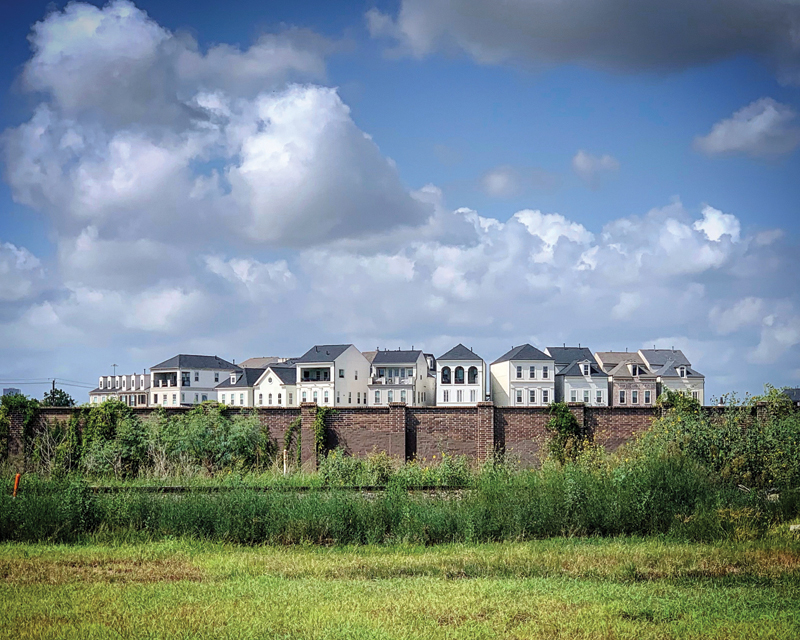
The “gated community” is not a traditional community but a reflection of common interests such as security and economic homogeneity. Often veiled in lifestyle concepts such as golf, age, or marine activity, the human making of distance and necessity to create difference between inside and out (the home turf) is as ancient as the temenos of the first temple in the desert. This urge may be even more potent in the endless terrain vague of the suburban city. Moreover, its gates may in fact be the gates of the traditional city, revealing that suburbia has never been very far from it, perhaps only redefining what qualifies as building material. Here, lawn becomes cobblestone, trees columns, and the leaf-blower a broom. Nature is kept at a “safe” distance.
– Lars Lerup, “Abecedarium,” One Million Acres & No Zoning, 2011.
Unironic Decorated Shed
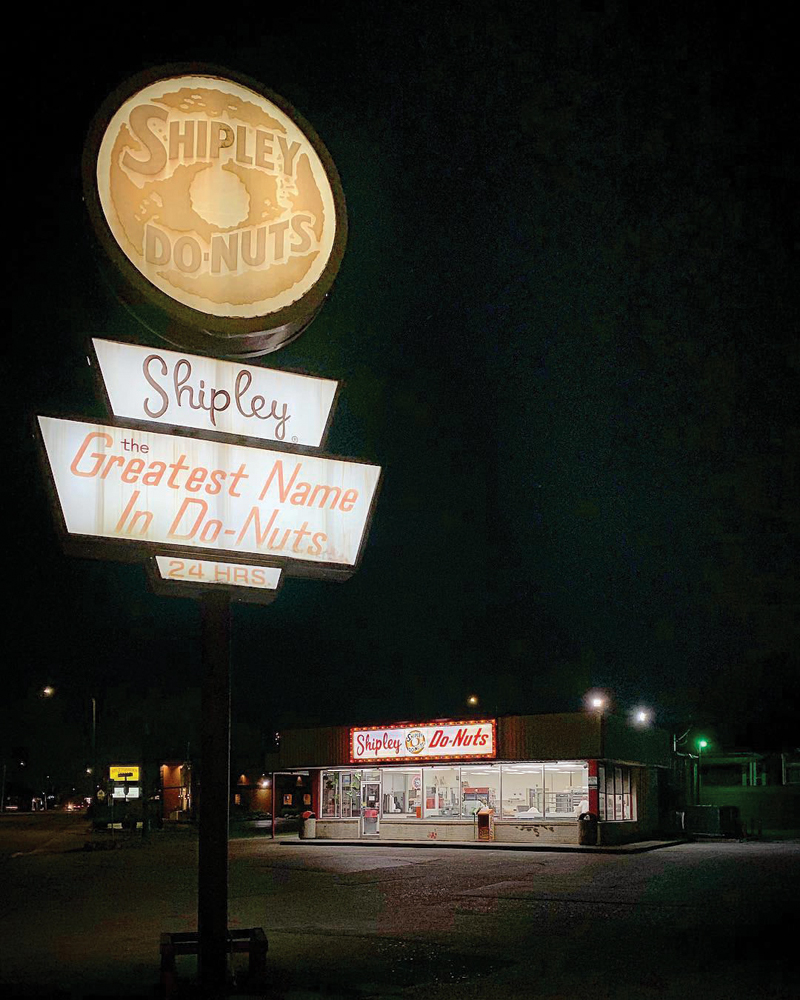
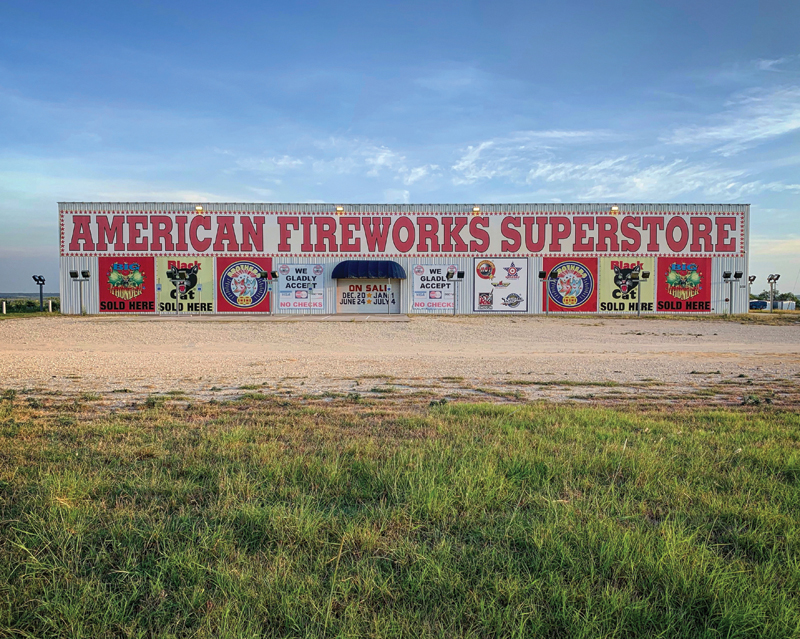
Signage has reached new stages of elaborate development in cities organized for a consumer society. New technologies have made available The Sign, larger and more intense than its neighbors and continuously programmed for everchanging displays… Common variations on the pure sign are buildings as-sign, in which the major formal elements are actually closer to signage than to building techniques… An inversion of these is the sign-as-building, in which the sign itself is actually made of architectonic motifs (piers, vaults, roof), while the rest of the real building is both expressively and literally incidental. Another variation is the hybrid half-building/half-sign, in which architectural elements… are extended as though a part of the building to provide more “frontage” to be read from an adjacent freeway.
– Peter Papademetriou, “Aspects of a New Urban Vernacular,” The Harvard Architecture Review, Issue 1, 1980.
Shameless

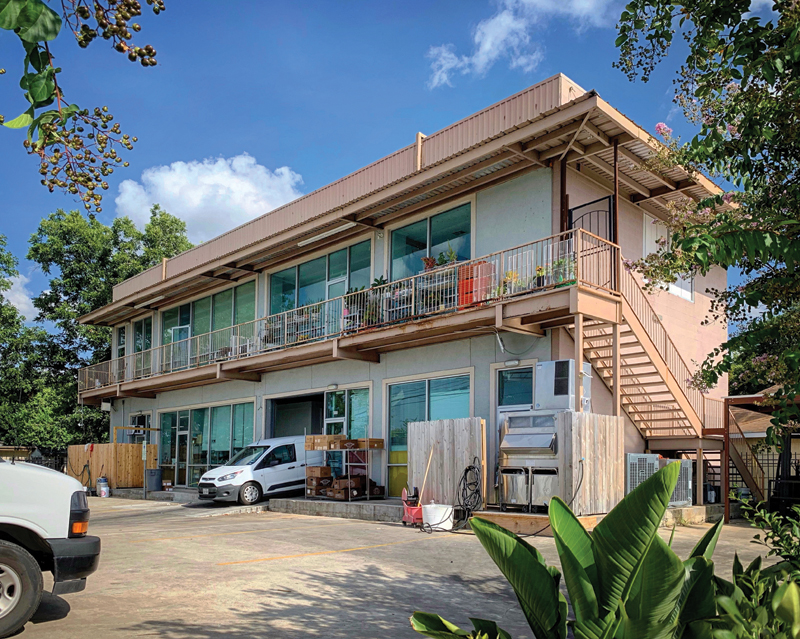
Almost all buildings in Tokyo have been built within the last 30 or 40 years, utilizing contemporary technologies. These technologies have formed a background to the appearance of shameless spatial compositions and functional combinations, unthinkable in the traditional European city… How have we managed to arrive at such a different place to European modernity despite being equipped with the same building technology?… But if our footsteps are actually embedded in such a pitiful urban landscape, the idea of using famous architecture as a criteria base seems to be just an attempt to express good taste. Photographic books amplify a desire for an architecture which simply can’t be found in our surroundings. In such a situation, then suddenly architectural design holds no interest anymore; the future appears depressing. If we can’t try to turn “disgusting” buildings into resources, then there is no reason to particularly stay in Tokyo. Surely we can start to think about how to take advantage of them, rather than trying to run away. Shamelessness can become useful. So let’s start by considering that these shameless buildings are not collapsible into the concept of “chaos,” but are in fact an intricate reporting of the concrete urban situation… The buildings we were attracted to were ones giving priority to stubborn honesty in response to their surroundings and programmatic requirements, without insisting on architectural aesthetic and form. We decided to call them “no-good architecture,” with all our love and disdain. Most of them are anonymous buildings, not beautiful, and not accepted in architectural culture to date. In fact, they are the sort of building which has been regarded as exactly what architecture should not become.
– Momoyo Kaijima, Junzo Kuroda, and Yoshiharu Tsukamoto, “Made in Tokyo,” 2001.
What Is It?


An essential failure of Modern Architecture has been its abstraction… Often forms recognizable as “modern” are generally so abstract they can be enlarged or reduced to any size, to operate at a variety of scales and contain diverse functions. This abstraction has led, rather perversely, to a kind of universal architype, the “What Is It?” building.
– Peter Papademetriou, “Aspects of a New Urban Vernacular,” The Harvard Architecture Review, Issue 1, 1980.

